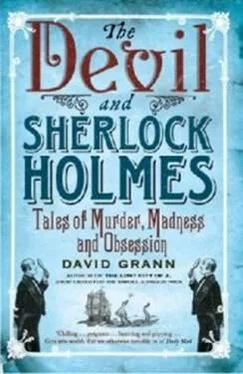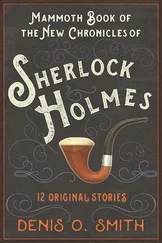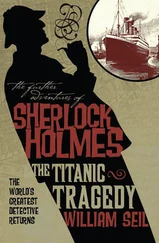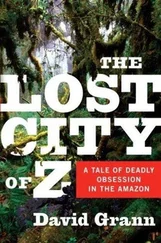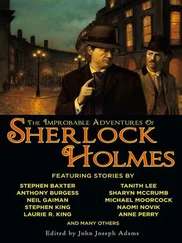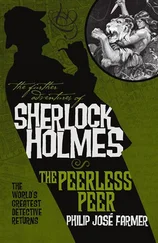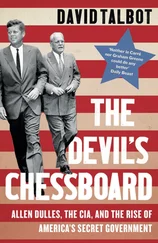“One last question,” I said. “Was anything taken out of the apartment?”
“Not that we know of. Richard had a valuable collection of Sherlock Holmes and Conan Doyle books, and nothing appears to be missing.”
As Gibson drove me back to the train station, he said, “Please, you must stay on the case. The police seem to have let poor Richard down.” Then he advised, “As Sherlock Holmes says, ‘When you have eliminated the impossible, whatever remains, however improbable, must be the truth.’”
Some facts about Richard Green are easy to discern-those which illuminate the circumstances of his life, rather than the circumstances of his death. He was born on July 10, 1953; he was the youngest of three children; his father was Roger Lancelyn Green, a best-selling children’s author who popularized the Homeric myths and the legend of King Arthur, and who was a close friend of C. S. Lewis and J. R. R. Tolkien; and Richard was raised near Liverpool, on land that had been given to his ancestors in 1093, and where his family had resided ever since.
Nathaniel Hawthorne, who was the American consul in Liverpool in the eighteen-fifties, visited the house one summer, and he later described it in his “English Notebooks”:
We passed through a considerable extent of private road, and finally drove through a lawn, shaded with trees, and closely shaven, and reached the door of Poulton Hall. Part of the mansion is three or four hundred years old… There is [a] curious, old, stately staircase, with a twisted balustrade, much like that of the old Province House in Boston. The drawing-room looks like a very handsome modern room, being beautifully painted, gilded, and paper-hung, with a white-marble fireplace, and rich furniture; so that the impression is that of newness, not of age.
By the time Richard was born, however, the Green family was, as one relative told me, “very English-a big house and no money.” The curtains were thin, the carpets were threadbare, and a cold draft often swirled through the corridors.
Green, who had a pale, pudgy face, was blind in one eye from a childhood accident, and wore spectacles with tinted lenses. (One friend told me that, even as an adult, Green resembled “the god of Pan,” with “cherubic-like features, a mouth which curved in a smile which was sympathetic, ironic, and always seeming to suggest that there was just one little thing that he was not telling you.”) Intensely shy, with a ferociously logical mind and a precise memory, he would spend hours roaming through his father’s enormous library, reading dusty first editions of children’s books. And by the time he was eleven he had fallen under the spell of Sherlock Holmes.
Holmes was not the first great literary detective-that honor belongs to Edgar Allan Poe’s Inspector Auguste Dupin-but Conan Doyle’s hero was the most vivid exemplar of the fledgling genre, which Poe dubbed “tales of ratiocination.” Holmes is a cold, calculating machine, a man who is, as one critic put it, “a tracker, a hunter-down, a combination of bloodhound, pointer, and bull-dog.” The gaunt Holmes has no wife or children; as he explains, “I am a brain, Watson. The rest of me is a mere appendix.” Rigidly scientific, he offers no spiritual bromides to his bereaved clients. Conan Doyle reveals virtually nothing about his character’s interior life; he is defined solely by his method. In short, he is the perfect detective, the superhero of the Victorian era, out of which he blasted with his deerstalker hat and Inverness cape.
Richard read the stories straight through, then read them again. His rigorous mind had found its match in Holmes and his “science of deduction,” which could wrest an astonishing solution from a single, seemingly unremarkable clue. “All life is a great chain, the nature of which is known whenever we are shown a single link of it,” Holmes explains in the first story, “A Study in Scarlet,” which establishes a narrative formula that subsequent tales nearly always follow. A new client arrives at Holmes’s Baker Street consulting room. The detective stuns the visitor by deducing some element of his life by the mere observation of his demeanor or dress. (In “A Case of Identity,” he divines that his client is a shortsighted typist by no more than the worn “plush upon her sleeves” and “the dint of a pincenez at either side of her nose.”) After the client presents the inexplicable facts of the case, “the game is afoot,” as Holmes likes to say. Amassing clues that invariably boggle Watson, the stories’ more earthbound narrator, Holmes ultimately arrives at a dazzling conclusion-one that, to him and him only, seems “elementary.” In “The Red-Headed League,” Holmes reveals to Watson how he surmised that an assistant pawnbroker was trying to rob a bank by tunnelling underneath it. “I thought of the assistant’s fondness for photography, and his trick of vanishing into the cellar,” Holmes says, explaining that he then went to see the assistant. “I hardly looked at his face. His knees were what I wished to see. You must yourself have remarked how worn, wrinkled and stained they were. They spoke of those hours of burrowing. The only remaining point was what they were burrowing for. I walked round the corner, saw the City and Suburban Bank abutted on our friend’s premises, and felt that I had solved my problem.”
Following the advice that Holmes often gave to Watson, Green practiced how to “see” what others merely “observed.” He memorized Holmes’s rules, as if they were catechism: “It is a capital mistake to theorize before one has data;” “never trust to general impressions, my boy, but concentrate yourself upon details;” “there is nothing more deceptive than an obvious fact.”
Not long after Green turned thirteen, he carried an assortment of artifacts from local junk sales into the dimly lit attic of Poulton Hall. Part of the attic was known as the Martyr’s Chamber and was believed to be haunted, having once “been tenanted by a lady, who was imprisoned there and persecuted to death for her religion,” according to Hawthorne. Nevertheless, up in the attic, Green assembled his objects to create a strange tableau. There was a rack of pipes and a Persian slipper stuffed with tobacco. There was a stack of unpaid bills, which he stabbed into a mantel with a knife, so that they were pinned in place. There was a box of pills labelled “Poison;” empty ammunition cartridges and trompe-l’œil bullet marks painted on the walls (“I didn’t think the attic would stand up to real bullets,” he later remarked); a preserved snake; a brass microscope; and an invitation to the Gasfitters’ Ball. Finally, outside the door of the room, Green hung a sign: “Baker Street.”
Relying on the stray details sprinkled throughout Conan Doyle’s stories, Green had pieced together a replica of Holmes and Watson’s apartment-one so precise that it occasionally drew Holmes aficionados from other parts of England. One local reporter described the uncanny sensation of climbing the seventeen stairs-the same number specified in the stories-as a tape recording played in the background with the sounds of Victorian London: the rumble of cab wheels, the clopping of horses’ hooves on cobblestones. By then, Green had become the youngest person ever inducted into the Sherlock Holmes Society of London, where members sometimes dressed in period costumes-in high-waisted trousers and top hats.
Though Holmes had first appeared in print nearly a century earlier, he had spawned a literary cult unlike that of any other fictional character. Almost from his inception, readers latched onto him with a zeal that bordered on “the mystical,” as one Conan Doyle biographer has noted. When Holmes made his début, in the 1887 Beeton’s Christmas Annual, a magazine of somewhat lurid fiction, he was considered not just a character but a paragon of the Victorian faith in all things scientific. He entered public consciousness around the same time as the development of the modern police force, at a moment when medicine was finally threatening to eradicate common diseases and industrialization offered to curtail mass poverty. He was proof that, indeed, the forces of reason could triumph over the forces of madness.
Читать дальше
